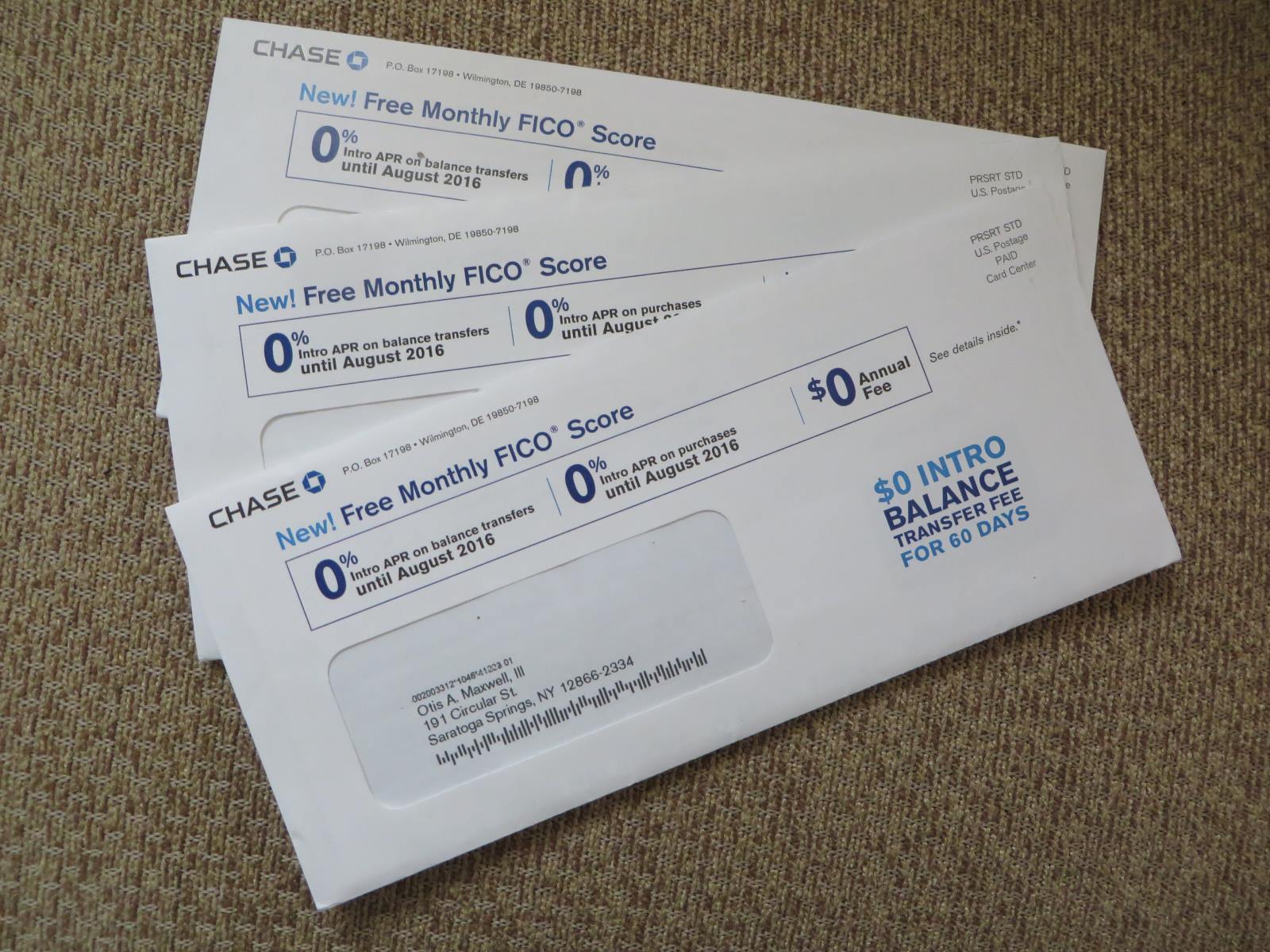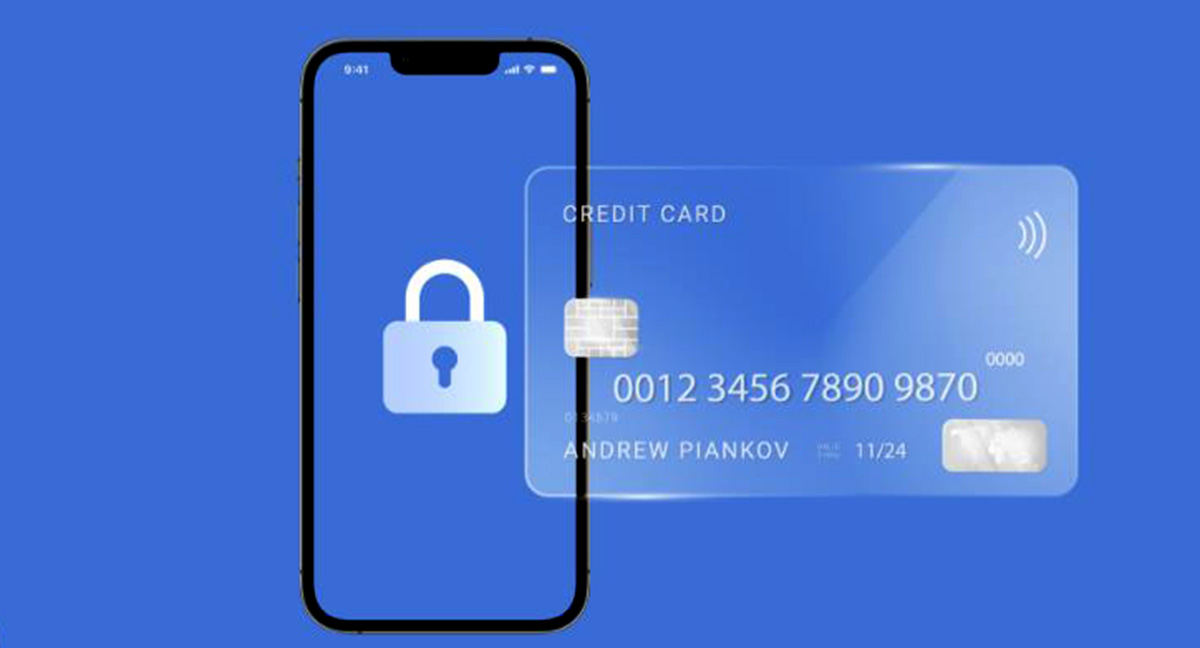Home>Finance>How To Safely Send Credit Card Details By Email


Finance
How To Safely Send Credit Card Details By Email
Published: November 9, 2023
Learn how to securely send credit card details through email in this comprehensive guide. Protect your financial information with these tips and best practices.
(Many of the links in this article redirect to a specific reviewed product. Your purchase of these products through affiliate links helps to generate commission for LiveWell, at no extra cost. Learn more)
Table of Contents
Introduction
Welcome to the digital age, where communication has become faster and more convenient than ever before. One popular method of communication is email, which has become an essential tool for businesses and individuals alike. However, when it comes to sensitive information like credit card details, extra precautions need to be taken to ensure the security and privacy of the data being shared.
In this article, we will explore the importance of email security when it comes to transmitting credit card details. We will also delve into the concept of encryption and how it can be used to safeguard sensitive information. Additionally, we will provide a step-by-step guide on how to safely send credit card details via email, along with recommendations for using secure email platforms and best practices for protecting credit card information.
With cybercrime on the rise, it is crucial for individuals and businesses to prioritize the security of their sensitive data. By following the methods and guidelines outlined in this article, you can minimize the risk of unauthorized access to credit card information and ensure the safety of both your own and your customers’ financial data.
Why Email Security Is Important
Email has become an integral part of our daily lives, serving as a means of communication for personal and professional matters. However, it also poses risks when it comes to the security and privacy of sensitive information, such as credit card details.
One of the main reasons why email security is important is the prevalence of cyber threats. Hackers and cybercriminals are continually finding new ways to exploit vulnerabilities and gain unauthorized access to personal and financial information. Without proper security measures in place, email communication can become a vulnerable entry point for these malicious actors.
When credit card details are transmitted via email without adequate protection, they are exposed to potential interception and misuse. This puts both the sender and the recipient at risk of identity theft, fraud, and financial loss. Additionally, for businesses that collect and store customer payment information, a data breach resulting from insecure email communication can have severe consequences, including reputational damage and legal liabilities.
Another crucial factor to consider is regulatory compliance. Many industries, such as finance, healthcare, and e-commerce, are subject to strict data protection regulations, including the Payment Card Industry Data Security Standard (PCI DSS). These regulations mandate secure handling and transmission of sensitive information, including credit card details. Failure to comply with these regulations can result in hefty fines and penalties.
Furthermore, email is not a secure medium by default. Emails can be intercepted or compromised during transit, and data stored on email servers may be vulnerable to hacking attempts. Additionally, email accounts can be subject to unauthorized access if weak passwords or phishing attacks are successful. It is essential to understand the risks associated with email communication and take the necessary steps to mitigate them.
By prioritizing email security, individuals and businesses can safeguard sensitive information like credit card details, protecting themselves and their customers from potential data breaches and financial harm.
Understanding Encryption
Encryption is a fundamental concept in ensuring the security and privacy of data transmitted over electronic channels, including email. It involves the process of converting plaintext information into ciphertext, making it unreadable and unintelligible to unauthorized individuals.
The encryption process relies on encryption algorithms and encryption keys. Encryption algorithms are complex mathematical formulas that scramble the original data, while encryption keys are unique codes used to unlock and decrypt the encrypted information.
In the context of email security, encryption can be implemented in two ways: at rest and in transit.
Encryption at rest: This refers to the encryption of data when it is stored on a server or device. When credit card details or any other sensitive information are stored on an email server, they should be encrypted to protect against unauthorized access. This ensures that even if the server is compromised, the data remains inaccessible without the encryption key.
Encryption in transit: This pertains to the encryption of data while it is being transmitted between the sender and the recipient. When an email is sent, it travels through various servers and networks before reaching its destination. Encrypting the email during transit ensures that it cannot be intercepted and read by anyone other than the intended recipient. This is particularly important when transmitting credit card details via email.
There are different encryption protocols and technologies used to secure email communication. One widely used protocol is Transport Layer Security (TLS), which establishes an encrypted connection between the sender and recipient’s email servers. TLS ensures that the data is encrypted during transit and helps prevent unauthorized interception or tampering.
Public Key Infrastructure (PKI) is another encryption technology commonly used in email security. PKI employs a pair of keys – a public key and a private key. The public key is used to encrypt the data, while the private key is kept secret and used to decrypt the data. This asymmetrical encryption provides an additional layer of security, as only the intended recipient possesses the private key required to decrypt the encrypted email.
By understanding encryption and its role in email security, individuals and businesses can make informed decisions on the appropriate encryption methods to employ when sending sensitive information, such as credit card details, via email. Implementing encryption measures ensures that the data remains confidential and protected from unauthorized access or interception throughout its journey.
Steps to Safely Send Credit Card Details By Email
While email may not be the most secure method of transmitting sensitive information like credit card details, there are steps you can take to enhance the security of the data being sent. Follow these guidelines to safely send credit card details via email:
- Use a Secure and Encrypted Connection: Ensure that you are using a secure and encrypted internet connection when accessing your email account. Avoid using public Wi-Fi networks or unsecured connections that can expose your data to potential interception.
- Do Not Include All Credit Card Details in the Email: To minimize the risk of unauthorized access, avoid including all credit card details, such as the full card number, expiry date, and CVV, in a single email. Instead, split the information across multiple emails or use alternate communication methods for sharing sensitive data.
- Encrypt the Email Content: Consider encrypting the content of the email before sending it. You can use encryption software or secure email platforms that offer encryption capabilities. Encrypting the email content adds an extra layer of security, making it more difficult for unauthorized individuals to access and decipher the information.
- Share Information Through Separate Channels: Instead of sending all credit card details in one email, consider using separate communication channels for different pieces of information. For example, you can send the card number via email, the expiry date through a secure messaging platform, and the CVV over a phone call.
- Inform the Recipient of Security Measures: Clearly communicate to the recipient the security measures you have taken to protect the credit card details. Explain any encryption or security protocols you have employed and emphasize the importance of keeping the information confidential.
- Double-Check the Email Addresses: Before sending the email, double-check that you are entering the correct email addresses for the recipient. Sending sensitive information to the wrong email address can compromise the security and privacy of the data.
- Delete the Email After Transmission: Once the credit card details have been successfully transmitted and received by the intended recipient, delete the email containing the sensitive information from your inbox and the sent folder. This reduces the chances of unauthorized access to the data in the future.
- Regularly Update Software and Security Measures: Keep your email client, antivirus software, and other security measures up to date. Regularly applying software updates and patches ensures that known vulnerabilities are patched, reducing the risk of unauthorized access to your email and the sensitive information within.
While these steps can enhance the security of credit card details sent via email, it is important to note that email communication alone cannot provide absolute security. Whenever possible, consider using more secure methods of transmitting sensitive information, such as secure file sharing platforms or encrypted messaging apps.
Remember, the key to safely sending credit card details via email is to minimize the exposure of sensitive information, use encryption where possible, and exercise caution throughout the process.
Using Secure Email Platforms
When it comes to sending sensitive information like credit card details via email, using secure email platforms can significantly enhance the security of the data. These platforms are specifically designed to prioritize email security and offer additional features to protect sensitive information. Here are some key considerations when using secure email platforms:
- End-to-End Encryption: Look for email platforms that offer end-to-end encryption. This ensures that the email content is encrypted on the sender’s device, remains encrypted during transit, and can only be decrypted by the intended recipient. With end-to-end encryption, even if the email is intercepted, the contents remain unreadable to unauthorized parties.
- Two-Factor Authentication (2FA): Enable two-factor authentication on your email account. This adds an extra layer of security by requiring a second form of verification, such as a unique code sent to your mobile device, in addition to your password. This helps prevent unauthorized access to your email account even if your password is compromised.
- Secure Storage: Some secure email platforms provide secure storage for your emails and attachments. This ensures that even if your device is lost or stolen, the sensitive information remains protected. Look for platforms that employ robust encryption methods to safeguard stored data.
- Phishing and Malware Protection: Choose email platforms with built-in phishing and malware protection. These platforms employ advanced algorithms and scanning techniques to identify and block suspicious emails or attachments that could potentially compromise the security of your computer and the data transmitted through email.
- Data Leak Prevention: Look for email platforms that offer data leak prevention features. These features can help identify and prevent accidental or unauthorized transmission of sensitive information, such as credit card details, outside of your intended recipients.
- Secure Attachment Handling: Ensure that the secure email platform has mechanisms in place to handle attachments securely. This may include scanning attachments for malware, encrypting them separately from the email content, or providing options for password-protecting attachments.
- Compliance with Industry Standards: For businesses handling credit card details or operating in regulated industries, it is essential to choose secure email platforms that comply with relevant industry standards and data protection regulations, such as the Payment Card Industry Data Security Standard (PCI DSS) and the General Data Protection Regulation (GDPR).
- User Training and Support: Consider the availability of user training and support resources provided by the secure email platform. Proper training can help users understand the platform’s security features and best practices for secure email communication.
By utilizing secure email platforms that offer these features and following best practices, you can significantly mitigate the risks associated with transmitting credit card details via email. These platforms prioritize the security and privacy of your data, providing peace of mind and ensuring that sensitive information remains confidential and protected from unauthorized access.
Best Practices for Protecting Credit Card Information
When it comes to safeguarding credit card information, whether for personal or business purposes, it is essential to follow best practices to ensure the security and integrity of the data. Here are some important guidelines to keep in mind:
- Implement PCI DSS Compliance: If your business collects and stores credit card information, make sure to comply with the Payment Card Industry Data Security Standard (PCI DSS). This set of security requirements ensures the protection of cardholder data and helps prevent data breaches.
- Minimize Data Collection: Only collect the credit card information you truly need. Limit the amount of data you collect to reduce the risk associated with data breaches. For example, instead of storing the card’s security code, request it each time a transaction is made.
- Use Secure Payment Gateways: If you operate an e-commerce website, use secure payment gateways that are professionally audited and compliant with industry security standards. These gateways encrypt credit card data during the transaction process, reducing the risk of interception.
- Invest in Secure Infrastructure: Ensure that your computer systems, including servers and networks, are protected with up-to-date security measures, including firewalls, antivirus software, and intrusion detection systems. Regularly update and patch software to protect against known vulnerabilities.
- Train Employees on Security Practices: Educate your employees on best practices for handling credit card information. Train them on how to securely process transactions, detect phishing attempts, and maintain the security of customer data throughout its lifecycle.
- Adhere to Secure Password Practices: Encourage the use of strong, unique passwords for all accounts that handle credit card information. Implement password policies that require regular password changes and the use of complex passwords that include a combination of letters, numbers, and special characters.
- Regularly Monitor and Review Activity: Implement regular monitoring and review processes to detect any signs of unauthorized access or suspicious activity related to credit card information. This includes reviewing logs and transaction records, monitoring network activity, and promptly investigating any anomalies or security breaches.
- Destroy Unnecessary Data: Once credit card information is no longer needed, securely destroy the data. This applies to both physical documents and electronic records. Shredding paper documents and securely deleting electronic files ensures that the data cannot be retrieved or misused.
- Stay Updated on Industry Trends: Remain informed about the latest security threats and industry best practices. Regularly review security guidelines and stay updated on emerging technologies and tools that can help improve the security of credit card information.
- Engage with Security Professionals: Consider partnering with cybersecurity experts or consultants who specialize in data protection and cardholder security. They can provide valuable insights, conduct vulnerability assessments, and help you implement effective security measures.
By adhering to these best practices, individuals and businesses can create a secure environment for credit card information. Protecting sensitive data not only safeguards against financial fraud but also builds trust with customers, enhances brand reputation, and ensures compliance with data protection regulations.
Conclusion
As email communication continues to be a primary method of sharing information, it is crucial to prioritize the security of sensitive data, especially when it comes to transmitting credit card details. By following best practices and using secure email platforms, individuals and businesses can minimize the risk of unauthorized access and protect against data breaches.
Understanding encryption and its role in email security is key to ensuring the confidentiality and integrity of credit card information. Encryption at rest and in transit adds an extra layer of protection, making it difficult for unauthorized individuals to decipher the data even if it is intercepted.
Implementing steps such as using a secure and encrypted connection, splitting credit card information across multiple emails, and encrypting email content are essential for safely sending credit card details by email. Informing recipients of security measures, double-checking email addresses, and promptly deleting transmitted emails further enhance security.
Secure email platforms offer advanced features like end-to-end encryption, two-factor authentication, phishing and malware protection, and secure attachment handling. Utilizing these platforms helps fortify the security of credit card information and provides additional layers of protection against unauthorized access.
Moreover, adopting best practices for protecting credit card information, such as PCI DSS compliance, minimizing data collection, training employees, and monitoring activities, helps create a secure environment for sensitive data and reduces the risk of data breaches.
While email alone may not provide absolute security for transmitting credit card details, employing these practices and staying informed about industry trends and emerging technologies can significantly improve the overall security posture.
Ultimately, by prioritizing email security and implementing safeguards to protect credit card information, individuals and businesses can safeguard sensitive data, build trust with customers, and mitigate the risks associated with unauthorized access and data breaches.














